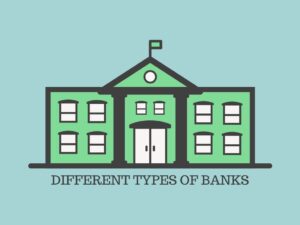Disinflation vs Deflation: Understanding the Differences
Disinflation and deflation are two terms often used interchangeably, but they have distinct meanings and implications in the world of economics. In this article, we will explore the concept of disinflation, its examples, and uses, as well as delve into deflation, its examples, and uses. Additionally, we will provide a comprehensive table highlighting the key differences between disinflation and deflation. By the end of this article, you will have a clear understanding of these two phenomena and be able to differentiate between them.
What is Disinflation?
Disinflation refers to a decrease in the rate of inflation over time. While inflation signifies a general increase in prices, disinflation means that the pace at which prices are rising is slowing down. In other words, disinflation reflects a decrease in the rate of inflation rather than a decrease in prices themselves.
Examples of Disinflation
- In the United States, the 1980s witnessed a period of disinflation when the excessive inflation of the 1970s started to decline. The rate of inflation dropped from double digits to single digits.
- In India, the Reserve Bank of India has recently implemented various measures to curb inflation, resulting in disinflationary trends.
- During the 2008 financial crisis, many countries experienced disinflation as demand decreased and the global economy slowed down.
Uses of Disinflation
Disinflation can be beneficial for an economy in several ways:
- Stability: Disinflation leads to stable price levels, allowing individuals and businesses to make more accurate financial plans.
- Monetary Policy: Central banks may adopt disinflationary policies to control inflation and maintain price stability.
- Investment: Lower inflation rates can encourage more investments in productive assets rather than speculative activities.
What is Deflation?
Deflation is a sustained decrease in the overall price level of goods and services in an economy. It is the opposite of inflation. However, deflation should not be confused with disinflation, as deflation refers to falling prices rather than just a reduction in the rate of price increases.
Examples of Deflation
- Japan experienced a prolonged period of deflation during the 1990s and early 2000s, often referred to as the “Lost Decade.” Prices continuously fell, leading to economic stagnation.
- The Great Depression of the 1930s is another significant example of deflation. Plummeting prices and widespread unemployment plagued the U.S. economy during this time.
- The recent COVID-19 pandemic has resulted in deflationary pressures due to reduced consumer spending and disrupted supply chains.
Uses of Deflation
Deflation can have both positive and negative consequences on an economy:
- Positive Impacts: Deflation can stimulate consumer spending as people delay purchases in anticipation of lower prices.
- Negative Impacts: Deflation can increase the burden of debt and reduce business profits, leading to lower investment and economic contraction.
- Rebalancing: Deflation can help correct excessive price increases, particularly in asset markets, and promote economic stability in the long run.
Differences between Disinflation and Deflation
| Difference Area | Disinflation | Deflation |
|---|---|---|
| Definition | A decrease in the rate of inflation | A sustained decrease in overall prices |
| Price Levels | Prices still rise, but at a slower pace | Prices decline over time |
| Impact on Consumers | Consumers see a slower increase in prices | Consumers experience falling prices |
| Impact on Businesses | Reduced pricing power, but prices remain positive | Reduced revenue and profitability due to falling prices |
| Debt | Debt burden remains the same or increases slightly | Debt burden increases due to falling incomes and asset values |
| Central Bank Response | Central banks may reduce interest rates to stimulate economic activity | Central banks may implement expansionary policies to combat deflation |
| Investment Incentives | Reduced inflation encourages investment in productive assets | Deflation might discourage investment due to reduced profitability |
| Economic Growth | Economic growth may continue at a slower pace | Deflation often accompanies economic recessions |
| Expectations | Expectations of future inflation remain positive | Deflationary expectations can lead to postponement of spending |
| Stability | Disinflation brings stability to price levels | Deflation can lead to economic instability and reduced spending |
Conclusion
In summary, disinflation and deflation are distinct economic phenomena with different implications. Disinflation refers to a decrease in the rate of inflation, while deflation signifies falling prices. Disinflation can promote stability and encourage investment, whereas deflation can have both positive and negative impacts on an economy. Understanding these differences is crucial for policymakers, businesses, and individuals to make informed decisions.
People Also Ask
- Q: Can disinflation lead to deflation?
A: Disinflation can precede deflation if the rate of inflation continues to decline and prices eventually start to fall. - Q: How does deflation affect wages?
A: Deflation can lead to wage decreases as businesses struggle with reduced profitability and lower consumer demand. - Q: Is deflation always negative for the economy?
A: While deflation can have negative consequences, such as increased debt burden, it can also correct excessive price levels and promote stability in the long term. - Q: Are disinflation and deflation more common in developed or developing economies?
A: Disinflation and deflation can occur in both developed and developing economies, as they are influenced by various macroeconomic factors. - Q: How do central banks combat disinflation or deflation?
A: Central banks can implement expansionary monetary policies, such as lowering interest rates or increasing money supply, to combat disinflation or deflation and stimulate economic activity.


